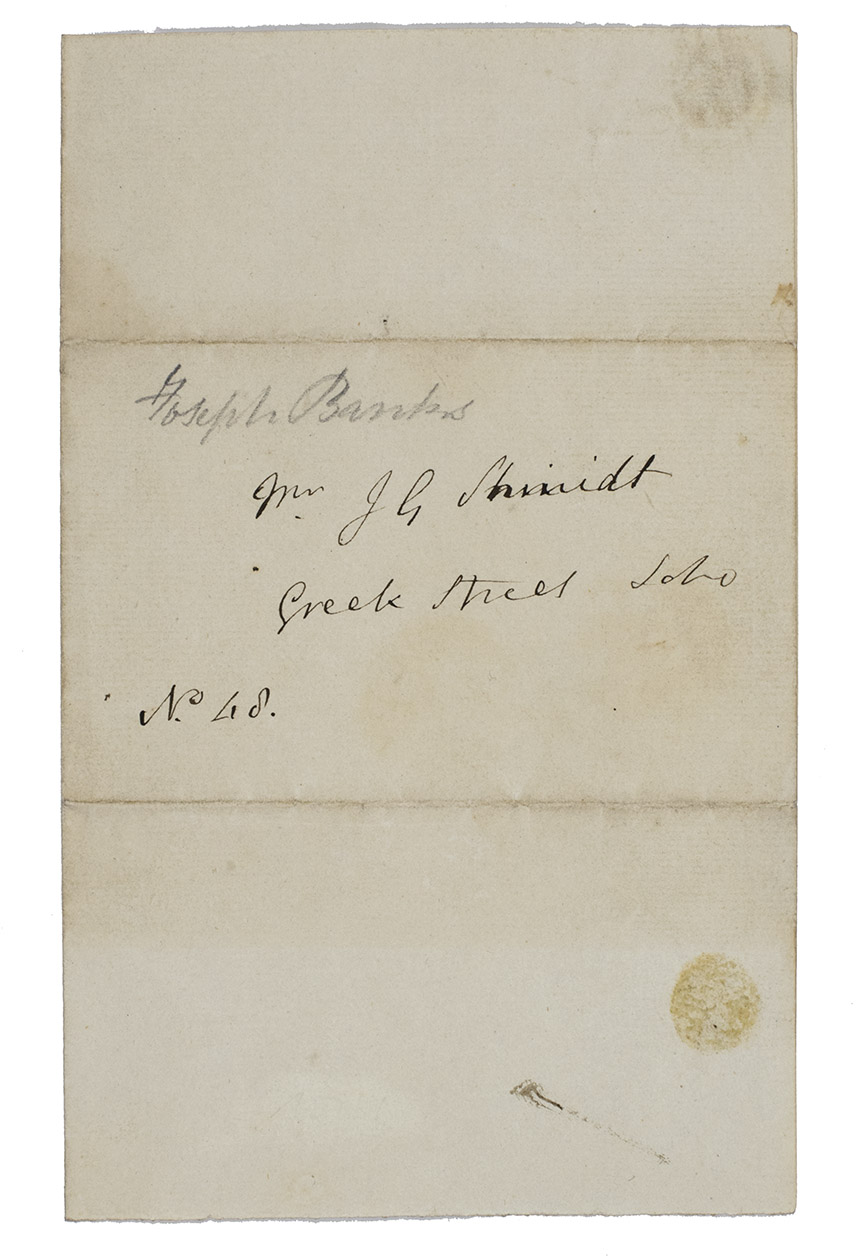[AUTOGRAPH]. BANKS, Joseph.
[Autograph letter to Johann Gottlieb Frederic Schmidt].
London, 30 April [ca. 1800]. 8vo (19 x 11 cm). Autograph letter in ink on laid paper, written on the first page of a bifolium, with the address on the last page. Folded twice more for posting with the address on the outside.
€ 3,250
Joseph Banks (1743-1820) was a major supporter of the internationalist nature of science, being actively involved both in keeping open the lines of communication with continental scientists during the Napoleonic Wars, and in introducing the British people to the wonders of the wider world. It is in that capacity, and as the president of the Royal Society, that the writes this letter, inviting the German scientist Johann Gottlieb Frederic Schmidt, to meet him and the physician and fellow scientist Sir Charles Brian Blagden, former secretary of the Society, on the following day (1 May) at 11 o'clock at Bank's house in Soho Square, to discuss "the subject of his [=your] letter of yesterday". Schmidt was living in Greek Street, Soho, so it was a very short walk to Bank's house.
Johann Schmidt had sent a letter to Joseph Banks the day before (29 April) apparently announcing a new invention. This letter probably concerned the invention Schmidt was to submit for a patent in 1805 (Repertory of arts, manufactures and agriculture, p. 320): "methods of sustaining animal life and combustion for a great length of time, at considerable depth beneath the surface of the sea, or other bodies of water in such a manner as to enable a person making use of such means to exist, and to move from place to place, at the bottom of the sea, or at any required depth between the surface and the bottom, with much more facility and advantage than by any other apparatus and contrivance which has been hitherto invented for that purpose". So Schmidt apparently invented an improved kind of diving bell. Blagden had taken an interest in human activity in difficult environments.
In an old portfolio with notes by a collector dated 1928. With traces of the seal.
Related Subjects:


